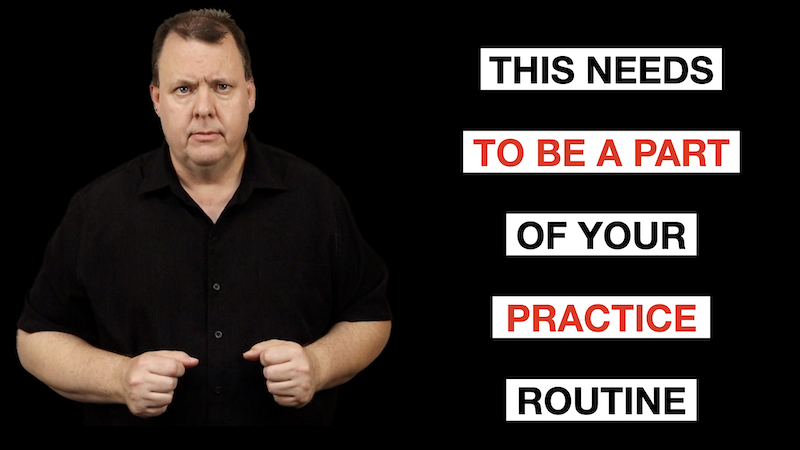Make Sure You Make This Part of Your Rhythm Practice Routine


To master anything, you need to find ways to continually test and refine your abilities.
In the accompanying video, I will demonstrate how to test your rhythm skills, regardless of your current level.
Rhythm is a critical factor in determining whether you sound like an amateur or a professional.
By identifying your strengths and weaknesses, you can pinpoint exactly what you need to work on.
Today, I will share with you a method for testing your understanding of what you're hearing. Regularly testing yourself is a crucial part of any musician's journey. It's how you figure out what you need to practice. If you want to see consistent improvement, you should always be working on something just outside your comfort zone. This process keeps you engaged and constantly learning.
Hi, I'm Brian fish from MusicTheoryForGuitar.com.
For some musicians, rhythm is easy. They have put in the time and effort to know precisely what each rhythm sounds like and how to play it. When they hear a part, they can write out the rhythm, which then makes filling in the notes and chords much more effortless. Whether you play covers, write your own material, or like to jam, the ability to write down what you want to play is not just important; it's essential. It ensures you don't lose ideas and saves you from relearning that same thing from scratch for the tenth time. You will have a record of what you want to play.
In this video, we will use closely related rhythms, ones that sound similar. This helps you understand the nuances of rhythm better. For some of you, the rhythms I choose for today may be too easy or hard. That's okay. It's the process that we're going through that matters. If you decide to do this independently, you can pick any set of rhythms to work with.
Here are the four rhythms we'll use today. Let's listen to them in isolation to get started.

(watch the video to hear these rhythms)
Now that we know what rhythms we will work with, we need to find a way to test our ability to recognize them. In an ideal situation, you have some buddies you play and practice with all the time. You can take turns playing rhythms for each other. Make sure you both have the ability to play rhythm accurately, or this won’t work.
If you don’t have someone to practice with, you can do this on your own. You can pick a set of rhythms, plan the order in which you will play them, and then record them. Set it aside for a few days or weeks, and then listen to it. Write down what you hear and then look at the answers to see how you did.
There are different levels for these types of challenges. For this video, we will begin at the easiest level: one instrument playing each rhythm in isolation. You will hear one rhythm played for one measure. You have to guess which of the four rhythms you heard.
(watch the video to do the exercise)
With exercises like this, you always want to think at different levels. What is the next thing that makes this a little bit more challenging? We can add in another instrument. For this level, we will add a drum track. You can do this in a DAW, or I like using Guitar Pro. You can quickly input both the guitar and drum tracks. Now, two rhythms are playing. You want to be able to pick out what rhythms the guitar is playing. Let’s test your ability to do this now.
(watch the video to do this exercise)
There are many layers you can create for exercises like this. I'm sure if you think for a minute, you can come up with a few of your own. For this video we are going to skip to a more complicated exercise. There will be a guitar, bass, and drum track for this one. The guitar will play a different rhythm on each beat. You only need to mark the number of the rhythm you hear. All four rhythms will be used in every exercise. Each combo will play for two measures. You can pause or rewind the video as many times as needed. Let’s try these exercises now.
(watch the video to do this exercise)
Now, what's going to happen is the rhythm is going to be played twice, and you're listening to the order in which these rhythms are being played. Now, as things get
From here, you can keep adding additional layers and other instruments to make picking out the guitar part harder. The more you do this, the easier it gets. This is one crucial part of learning and mastering rhythm.
If you want to know all the steps you should follow to master any rhythm, you should get my free video guide, “6 Easy Steps to Learn and Play Any Rhythm With Perfect Timing.” This simple step-by-step guide shows you how to master any rhythm, no matter how complex. Click this link above to get your copy today.